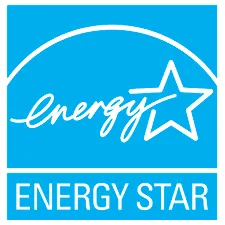About ENERGY STAR

ENERGY STAR® is the government-backed symbol for energy efficiency. The blue ENERGY STAR label provides simple, credible, and unbiased information that consumers and businesses rely on to make well-informed decisions.
A Public-Private Partnership
ENERGY STAR is administered by the U.S. Environmental Protection Agency. Thousands of organizations—including nearly 40% of the Fortune 500®—partner with ENERGY STAR. Together with EPA, they deliver cost-saving energy efficiency solutions that protect the climate, improve air quality, and protect public health.
Real-World Impacts
Since 1992, ENERGY STAR and its partners have helped American families and businesses:
- Save 5 trillion kilowatt-hours of electricity.
- Avoid more than $500 billion in energy costs.
- Achieve 4 billion metric tons of greenhouse gas reductions.
Learn More
Get the latest stats on the economic and environmental benefits of ENERGY STAR.
Through ENERGY STAR, EPA partners with the private sector to transform how we use energy.
Search for tax incentives on energy-saving products and building efficiency upgrades.



